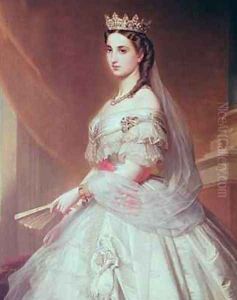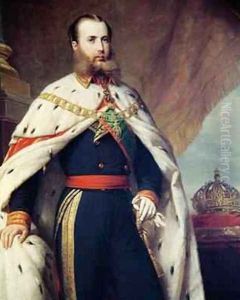Alfred Graeffle Paintings
Alfred Graeffle, born in 1875, was a German artist known for his illustration and painting work during the late 19th and early 20th centuries. His body of work, though not as widely recognized as some of his contemporaries, provides a fascinating insight into the art movements and cultural shifts of his time. Graeffle's artistic journey mirrors the broader trends in European art, transitioning from the detailed realism of the 19th century to embracing the emerging modernist sensibilities of the early 20th century.
Graeffle's early work was heavily influenced by the academic art traditions of the late 19th century, focusing on detailed, realistic portrayals of subjects. However, as his career progressed, he began experimenting with more abstract forms and vibrant color palettes, indicative of the shifting artistic paradigms of his era. His illustrations often appeared in magazines and books, capturing the imagination of a wide audience with their intricate designs and evocative themes.
Throughout his career, Alfred Graeffle navigated the challenges of World War I and the interwar period, which significantly impacted the art world in Germany and beyond. Despite these turbulent times, he managed to maintain a steady output, adapting his style to the changing tastes and political climates. Graeffle's work from this period reflects a nuanced understanding of both the beauty and tragedy of the human condition, a testament to his deep engagement with the world around him.
Graeffle passed away in 1952, leaving behind a legacy that, while perhaps not as celebrated as that of some of his peers, offers valuable insights into the evolution of European art. His contributions to illustration and painting continue to be studied by art historians and enthusiasts alike, who appreciate his ability to capture the essence of his time through a unique and evolving artistic lens. Alfred Graeffle's life and work serve as a reminder of the rich tapestry of styles and ideas that characterized the turn of the century, marking him as a significant, if underappreciated, figure in the history of art.

